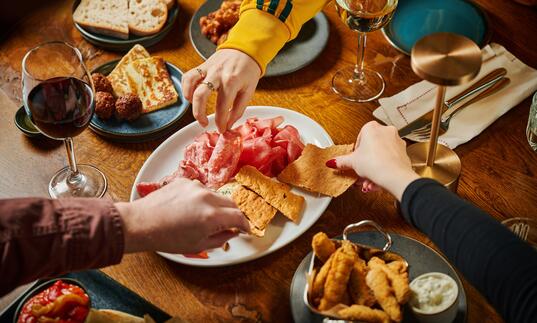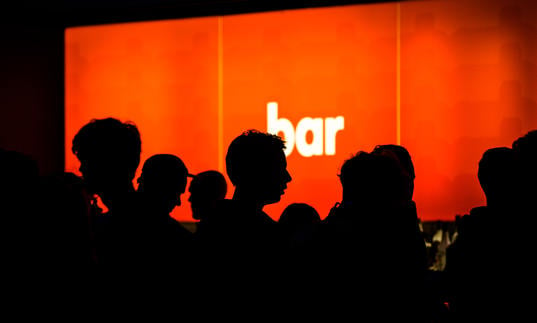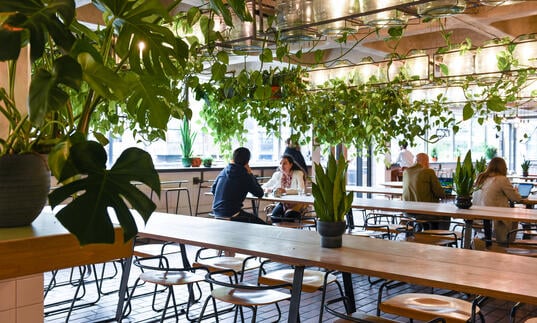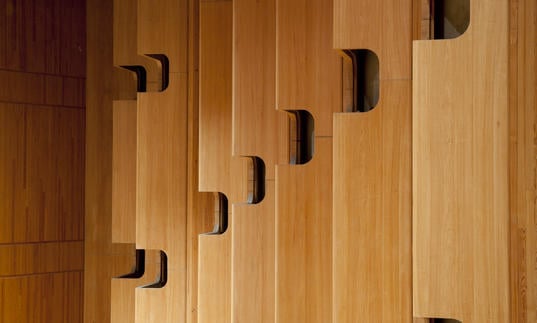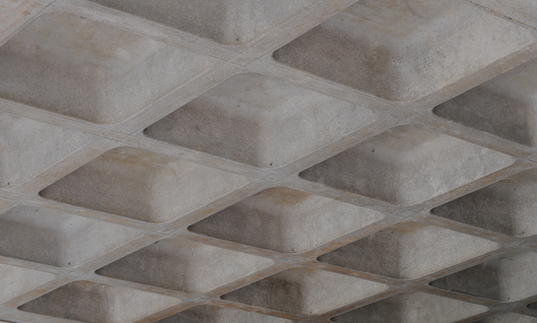Swordfishtrombones Revisited
Start time: 8pm
Approximate running time one hour 30 minutes, no interval
Please note all timings are approximate and subject to change

David Sheppard talks to David Coulter about discovering a spirit of adventure through Swordfishtrombones.
At the dawn of the 1980s, Tom Waits was in danger of sliding into terminal self-parody. While his songs were covered by everyone form The Eagles to Bruce Springsteen, Waits, who had just turned 30, seemed stuck in an artistic rut, his albums delivering a cocktail of retro styles: afterhours burlesques, Beat poet reveries, jazzy stomps and string-laden ballads, all of them rendered in the grizzled cartoon baritone of a heavy-smoking soak at least twice his age. Despite 1980’s Heart Attack & Vine, the sixth and last of his albums for Elektra/Asylum, winning critical plaudits, Waits was growing jaded, holed up in West Hollywood’s sybaritic Tropicana Hotel, still peopling his songs with lonely, hard-boiled characters apparently on loan from desolate Edward Hopper paintings or the novels of Dashiell Hammett. While elsewhere punk’s youthful new broom was gleefully sweeping away the old, Waits remained a goateed, trilby-hatted anachronism, a wilful throwback to a sentimentalised, pre-rock’n’roll America. ‘I used to think I was making movies for the ears… I was overly maudlin and romantic’, he later admitted.
Happily, artistic deliverance would soon arrive courtesy of another kind of ‘movie for the ears’ – namely a commission from Francis Ford Coppola to write a ‘lounge operetta’ score for the director’s ambitious cine-musical, One From the Heart. While clocking on every day at Coppola’s Zoetrope studio to pen the soundtrack’s tender duets (ultimately co-sung with country chanteuse Crystal Gayle), Waits befriended Irish-born, Ohio-raised script editor and eclectic music fan Kathleen Brennan. Romance quickly blossomed and the couple were soon married. Challenging her paramour to stop repeating himself (‘I’d nailed one foot to the floor and kept going in circles, making the same record’, Waits later acknowledged), Brennan encouraged a clear out of Waits’ existing backroom team, and quickly settled into the role of manager-collaborator-muse.
A now creatively ravenous Waits gorged himself on Brennan’s catholic record collection, mainlining everything from Captain Beefheart and Kurt Weil to the avant-garde compositions of instrument inventor Harry Partch. By the summer of 1982 he had signed to Island and was hunkered down in Hollywood’s Sunset Sound, transforming the studio into a junkyard laboratory where Slavic marches, Weimar waltzes and abstract blues would be alchemically blended with musique concrète, bizarro percussion and Partch’s disorienting microtonal sound palette.
The resulting album would be Waits’ genre-defying masterpiece, Swordfishtrombones, released the following year. Brimming with eccentric and antediluvian instruments such as the bass marimba and glass harmonica, not to mention a miscellany of colourfully named Asian percussion obscurities such as metal auglongs and boo bams, the album ushered in a reconditioned, pan-global Tom Waits, who now sang in an assortment of differently compelling ‘character’ voices. The songs, still reliably cinematic, now ranged across a timeless phantasmagoria of narratives and musical styles, be it the junkyard swing of ‘In the Neighbourhood, the Balkan stomp of ‘Underground’, the drenched, sub-tropical throb of ‘Shore Leave’ or the pastiche cocktail jazz underpinning spoken word comic-grotesque, ‘Frank’s Wild Years’. Elsewhere, eye-moistening ballads like the dead serviceman’s lament ‘Soldier’s Things’ and the delicate, openhearted paean to his new wife, ‘Johnsburg, Illinois’, dealt in a newfound quotidian poignancy worthy of Frank Capra. In ‘16 Shells From a Thirty-Ought-Six’, Waits, now in carnival barker mode, yelled about ‘making a ladder from a pawnshop marimba”’ – it might have been a mission statement for the album: elevation using exotic tools.
A critical hit (and a minor chart one, too – reaching number 62 in the UK), Swordfishtrombones was widely hailed as Waits’ creative renaissance. Transposing its diverse, multi-textured songs to the concert stage would prove a bridge (if not a metal auglong-propelled middle eight) too far, however. Indeed, while tours in support of subsequent 1980s Waits albums Rain Dogs and Frank’s Wild Years would embrace some of its songs in stripped-down form, on release, Swordfishtrombones went completely without live promotion.
It’s a historical fact that might have daunted frailer sonic interpreters than Oakland, California-based, English multi-instrumentalist David Coulter, musical director for tonight’s Swordfishtrombones Revisited concert. Both musician and composer, Coulter has served time with everyone from Test Dept to The Pogues, and, crucially, was MD for 2004 productions of the Tom Waits, William S. Burroughs and Robert Wilson opera, The Black Rider. A sometime live consigliere for the likes of Damon Albarn, Marianne Faithfull and Yoko Ono, Coulter is also a noted exponent of the musical saw – just one of the many instruments he and his hand-picked retinue of musicians will be essaying during tonight’s performance. Already a veteran of the similarly themed Rain Dogs Revisited (staged at the Barbican in 2011), Coulter is clear that the concert will explore the spirit rather than the letter of Swordfishtrombones:
‘We won’t be trying to replicate anything per se’, he explains. ‘Shows like this are all about the casting – we only get a few days to rehearse, but it can take a year to assemble the right musicians. I’ve chosen tonight’s five vocalists because I love what they do not because they sound like Tom…’
Framing the singers, Coulter has corralled a genuinely versatile band, including Polar Bear percussionist Seb Rochford, horn player Terry Edwards (PJ Harvey, Tindersticks), producer and guitarist and leader of The Invisible Dave Okumu, and Thomas Bloch, the go-to exponent of arcane instrumental curiosities such as the ondes Martenot, Cristal Baschet and glass harmonica. Another veteran of The Black Rider, Bloch points out that tonight’s show is fully sanctioned by Tom Waits himself. ‘Tom trusts David and our band. He knows that even if we don’t use the original instruments, we’ll keep the spirit of his music.’ Coulter echoes those sentiments. ‘Tom and Kathleen know how I operate – they’re very supportive.’
Besides, Coulter is too enamoured of Swordfishtrombones to be anything other than a trustworthy custodian of its singular magic. ‘This album tore up the rulebook for me… it showed how important it is to retain a spirit of adventure. That’s still what drives me. Eventually you learn, today’s avant-garde is tomorrow’s mainstream. Anyone can do ‘normal’’.
Start time: 8pm
Approximate running time one hour 30 minutes, no interval
Please note all timings are approximate and subject to change
Performers
Lisa O’Neill vocals, banjo
Soap&Skin vocals
Nadine Shah vocals
Matthew E White vocals
Dorian Wood vocals
David Coulter musical director, music saw, guitar, percussions
Thomas Bloch ondes martenot
Pete Saunders piano, organ
Terry Edwards saxophones, trumpet
Dave Okumu guitars
Seb Rochford drums, percussion
Tom Herbert bass
Thierry ‘Karacas’ Cabecas stage manager
Fanny Deroff production management
Lee Evans sound
Tom Sheppard lights
Emma Wood monitors
Discover
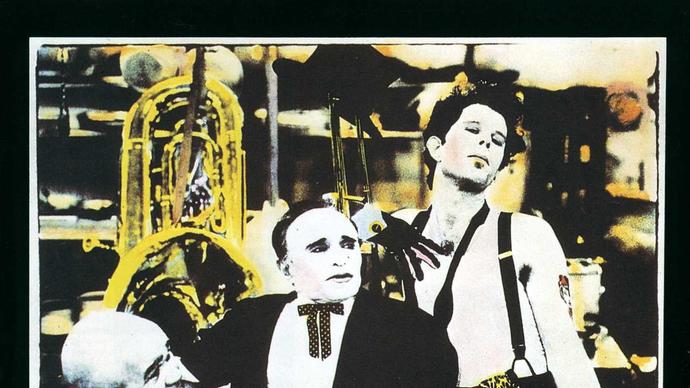
Listen: Swordfishtrombones
Take a listen to American singer-songwriter Tom Waits' first self-produced album Swordfishtrombones, which he released back in September 1983.

Barbican Sessions: Matmos
The experimental electronic duo use plastic trash and sampling to create a unique track filmed in the Life Rewired Hub.

Listen: Barbican Recommends
Not sure what to listen to? Every month we update our Barbican Recommends Spotify playlist with what we've been listening to in the office. Expect everything from Punk to Jungle to Classical.
You might also like...

with Dawn of Midi + Daniel Brandt
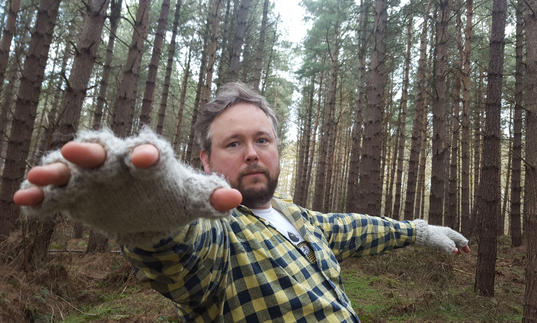
Barbican Hall
Location
The Barbican Hall is located within the main Barbican building. Head to Level G and follow the signs to find your seating level.
Address
Barbican Centre
Silk Street, London
EC2Y 8DS
Public transport
The Barbican is widely accessible by bus, tube, train and by foot or bicycle. Plan your journey and find more route information in ‘Your Visit’ or book your car parking space in advance.
We’ve plenty of places for you to relax and replenish, from coffee and cake to wood-fired pizzas and full pre-theatre menus
Mobility
Spaces for wheelchair users in row U at the rear of the stalls (up to sixteen, depth of row 180cm) and the back row of the circle (four), both with fold-down companion seats. Some seats in row S of the stalls for people with very limited mobility.
Assistance dogs
Assistance dogs may be taken into the concert hall where there are a limited number of suitable seats in row G of the stalls. If you prefer, you may leave your dog with a member of the cloakroom staff during the performance.
Hearing facility
There is an induction loop in the concert hall. You can use this by adjusting your hearing aid to the ‘T’ setting.
Free large-print programmes
These are available for most of our concerts. Please contact [email protected] at least a week beforehand, to prebook a large-print programmme.
For more access information, please visit our Accessibility section.
Plan your visit
Meet friends, grab a drink, drop in to one of the free installations on Level G before the show - here's what else is happening at the Barbican when you visit.

Cabarets & Clubs in Modern Art
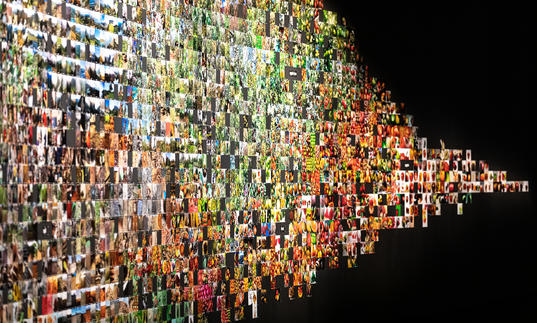
From 'Apple' to 'Anomaly'

